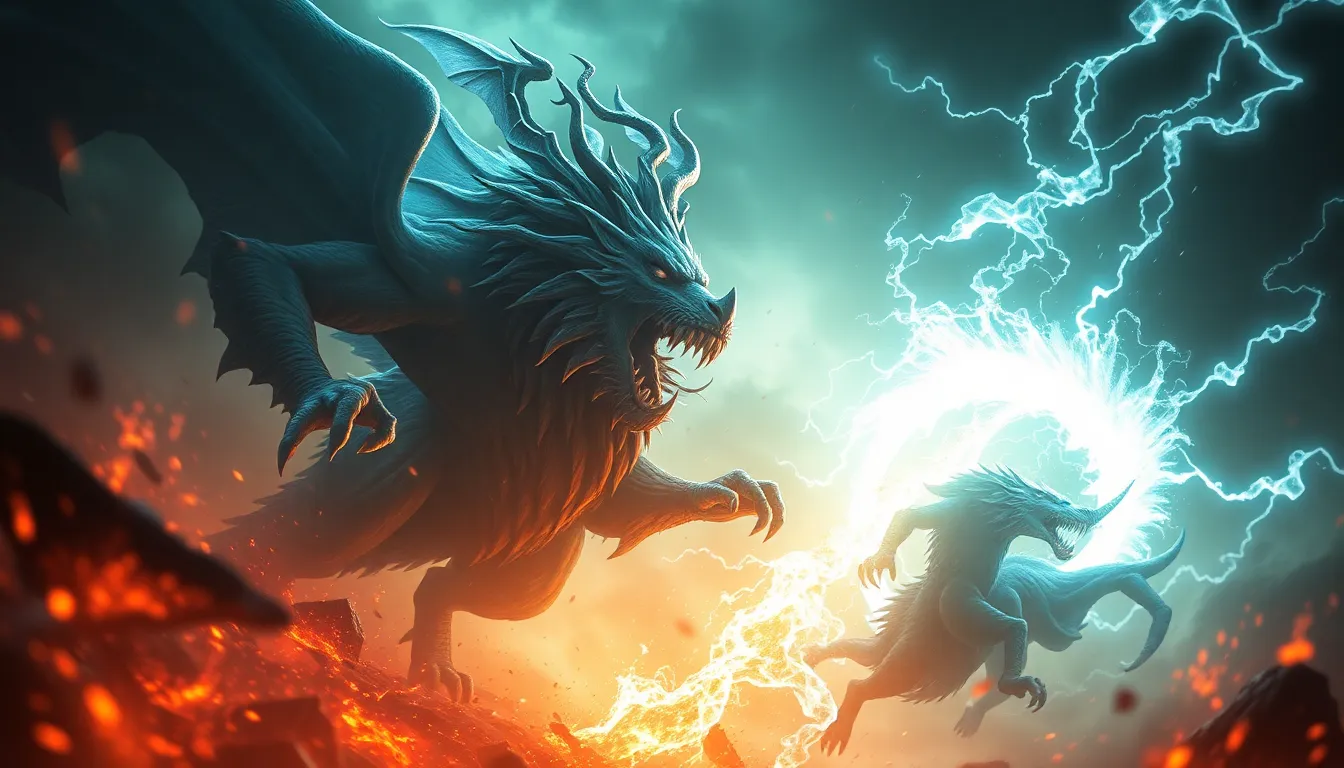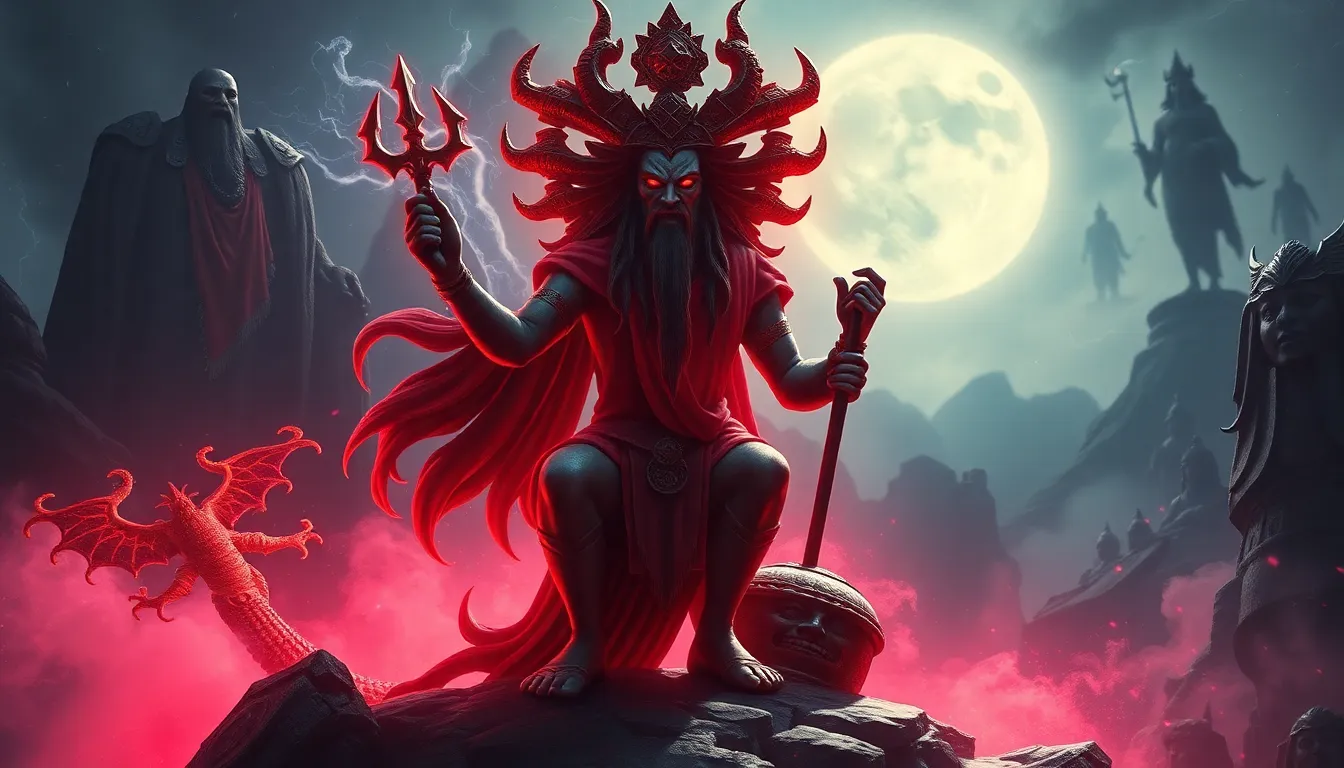Fierce Legends: The Most Intense Mythological Showdowns!
Introduction to Mythological Showdowns
Mythological showdowns are epic confrontations between gods, heroes, and mythical creatures that shape the narratives of various cultures. These battles often embody the values, fears, and aspirations of the societies from which they originate. They serve as a medium for exploring complex themes such as good versus evil, chaos versus order, and the struggles of fate and free will.
This article delves into some of the most intense mythological showdowns across different cultures, highlighting their significance and the lessons they impart. From the titanic battles of Greek mythology to the cosmic struggles in Norse legends, each tale offers insights into the human condition and the eternal conflicts that define our existence.
Greek Mythology: The Epic Clash of Titans
One of the most significant mythological battles in Greek lore is the Titanomachy, a monumental conflict between the Titans, led by Cronus, and the Olympian gods, led by Zeus. This battle not only signifies a generational conflict but also marks the transition from the old order to the new.
- The Titanomachy: The Titans, who were the original gods, ruled during the Golden Age. However, Cronus, fearing that he would be overthrown by his own children, swallowed them at birth. Rhea, his wife, saved Zeus by hiding him and giving Cronus a stone wrapped in swaddling clothes instead.
- The Climax: When Zeus grew up, he freed his siblings, and together they waged war against Cronus and the Titans. After a fierce battle lasting ten years, the Olympians triumphed, banishing the Titans to Tartarus.
This generational conflict is significant in understanding the themes of power, legacy, and the inevitable rise and fall of gods. The consequences of the Titanomachy transformed the divine hierarchy, establishing Zeus and the Olympians as the new ruling deities of the universe.
Norse Mythology: Ragnarok and the Final Battle
Ragnarok is the Norse apocalypse, a series of events culminating in a cataclysmic battle that signifies the end of the world as it is known. Central figures in this battle include Odin, Thor, Loki, and the Giants, each representing different aspects of Norse cosmology and morality.
- Events Leading to Ragnarok: Signs of Ragnarok include the Fimbulwinter, a harsh winter that precedes the final battle. Natural disasters and the breakdown of societal order signal the chaos to come.
- The Key Players: Odin, the Allfather, seeks knowledge and power to understand fate, while Thor, the god of thunder, prepares to confront the serpent Jormungandr. Loki, once a friend to the gods, becomes their greatest foe, leading the Giants against them.
The themes of fate and rebirth are central to Norse beliefs, as Ragnarok is not merely an end, but also a new beginning. After the destruction, the world will rise anew, and a new generation of gods will take over, symbolizing the cyclical nature of life and death.
Hindu Mythology: The Battle of Kurukshetra
The Mahabharata, one of the two major Sanskrit epics of ancient India, centers around the Battle of Kurukshetra, an epic conflict that delves into the complexities of dharma (duty/righteousness). This battle is not just a war for the throne but a profound exploration of morality and ethics.
- Key Figures: Arjuna, one of the Pandava princes, finds himself in moral turmoil on the battlefield, questioning the righteousness of fighting against his own kin. Krishna, his charioteer and divine guide, imparts the teachings of the Bhagavad Gita, addressing Arjuna’s doubts and fears.
- The Moral Complexities: The battle presents stark dilemmas of duty, loyalty, and justice, forcing characters to confront their own beliefs and the consequences of their actions.
The Battle of Kurukshetra serves as a powerful reminder of the complexities of duty and the moral struggles individuals face in times of conflict, making it a timeless narrative in Hindu mythology.
Egyptian Mythology: Osiris vs. Set
In Egyptian mythology, the conflict between Osiris and Set represents the eternal struggle between order and chaos. Osiris, the god of the afterlife, symbolizes life, fertility, and resurrection, while Set embodies chaos, violence, and disorder.
- The Myth of Osiris: Set’s jealousy leads him to murder Osiris, dismembering his body and scattering the pieces across Egypt. However, Osiris’s wife, Isis, collects the pieces and resurrects him, allowing him to become the ruler of the underworld.
- The Battle’s Significance: This myth highlights the themes of resurrection and the cyclical nature of life, as Osiris’s death and resurrection symbolize the agricultural cycles of the Nile and the promise of rebirth.
The battle between Osiris and Set encapsulates the struggle between chaos and order, a fundamental theme in Egyptian mythology that reflects the society’s values and beliefs.
Mesoamerican Mythology: Quetzalcoatl vs. Tezcatlipoca
In Mesoamerican mythology, particularly within the Aztec tradition, the conflict between Quetzalcoatl and Tezcatlipoca is emblematic of creation and destruction. These two deities embody opposing forces that shape the world and its fate.
- Creation and Destruction: Quetzalcoatl, the feathered serpent, represents life, knowledge, and order, whereas Tezcatlipoca, the smoking mirror, embodies night, chaos, and conflict. Their dynamic relationship results in various cosmic events, influencing the creation and sustenance of the world.
- Cultural Implications: The conflict between these two deities reflects the duality of existence and the balance between opposing forces. Their narrative has profound implications for Mesoamerican society, informing their beliefs about life, death, and the cyclical nature of time.
The tales of Quetzalcoatl and Tezcatlipoca illustrate the intricate relationship between creation and destruction, which is central to understanding Mesoamerican mythology and culture.
Japanese Mythology: Amaterasu vs. Susanoo
In Japanese mythology, the sibling rivalry between Amaterasu, the sun goddess, and Susanoo, the storm god, reflects fundamental cosmic principles. Their conflicts not only shape the world but also symbolize the balance between light and darkness.
- The Cosmic Implications: Amaterasu represents light, order, and fertility, while Susanoo symbolizes storms, chaos, and unpredictability. Their rivalry leads to significant events, including Amaterasu’s retreat into a cave, plunging the world into darkness.
- Cultural Reflection: This myth embodies the Japanese cultural values of harmony and balance, emphasizing the importance of coexistence between opposing forces.
The story of Amaterasu and Susanoo illustrates the interplay between light and dark, offering insights into the Japanese worldview and its reverence for nature and balance.
Celtic Mythology: Cuchulainn’s Duels
Cuchulainn, a legendary hero of Irish mythology, is known for his incredible feats of strength and bravery. His battles, particularly against his friend Ferdiad, exemplify the themes of honor, fate, and the warrior’s code.
- Overview of Cuchulainn: Cuchulainn, often referred to as the Hound of Ulster, possesses extraordinary combat skills and is a symbol of heroism in Celtic lore.
- Key Battles: The duel between Cuchulainn and Ferdiad highlights the tragic nature of honor in warfare, as both are bound by loyalty yet must face each other as adversaries.
The themes of honor, fate, and the warrior’s code are central to Cuchulainn’s narrative, reflecting the values of Celtic society and the complexities of heroism.
Themes and Symbolism in Mythological Showdowns
Across these diverse mythologies, several common themes emerge from the epic battles:
- Good vs. Evil: Many showdowns symbolize the eternal conflict between benevolent and malevolent forces.
- Chaos vs. Order



